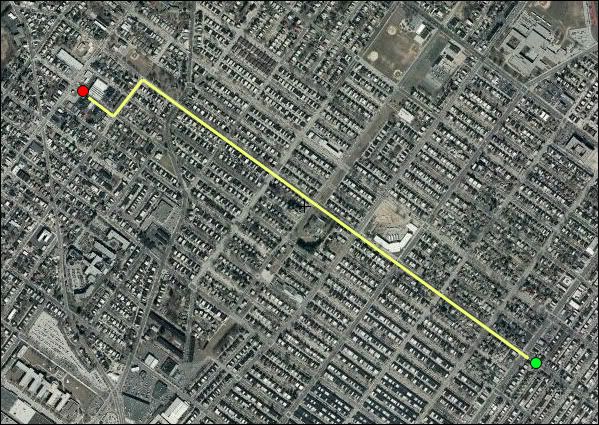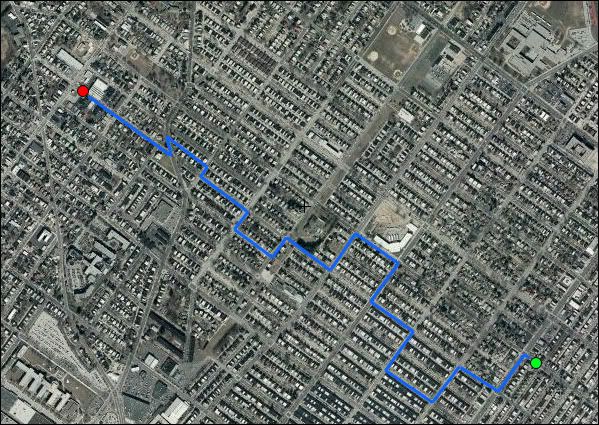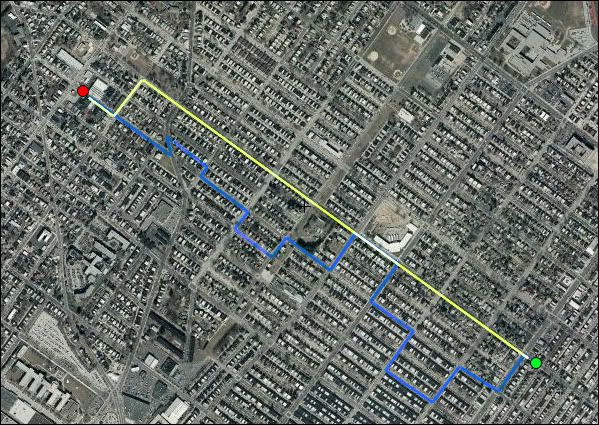My simple rules were to stand outside my apartment at 1918 Diamond and go the direction of the first car that passes me. From there I would stop at every street corner and go the opposite direction of the first car that comes to the intersection while I'm there. Human contact comes into play in that the flow of people driving their cars dictated where I would go. Although I went down a few back alleys, the fact that certain roads were traveled much more than others meant that I was stuck on them for much longer than others.
The map shows my path and how it was very convenient about getting me around multiple roads close to my apartment and then back to it. I think what made this project successful was the fact that every road (except the one I started on, Diamond) was one way. This made it possible for there to be no confusion as to where I had to go, and no walking back and forth on one sidewalk over and over.

Map of my path. Norris is a pretty busy street and as seen I was brought there multiple times.
 My first time turning onto Norris.
My first time turning onto Norris. Turning off Norris for the second time and onto 18th.
Turning off Norris for the second time and onto 18th.
This car that brought me onto 20th was essentially the one that marked the halfway point and started the trip back.

Despite them both being pretty heavily traveled roads, I had to stand on this corner of 19th and Norris for about 5 minutes in the cold rain before a car came.
 I was happy to see this car come down 17th because it meant I could go back up to Diamond and get home.
I was happy to see this car come down 17th because it meant I could go back up to Diamond and get home.


